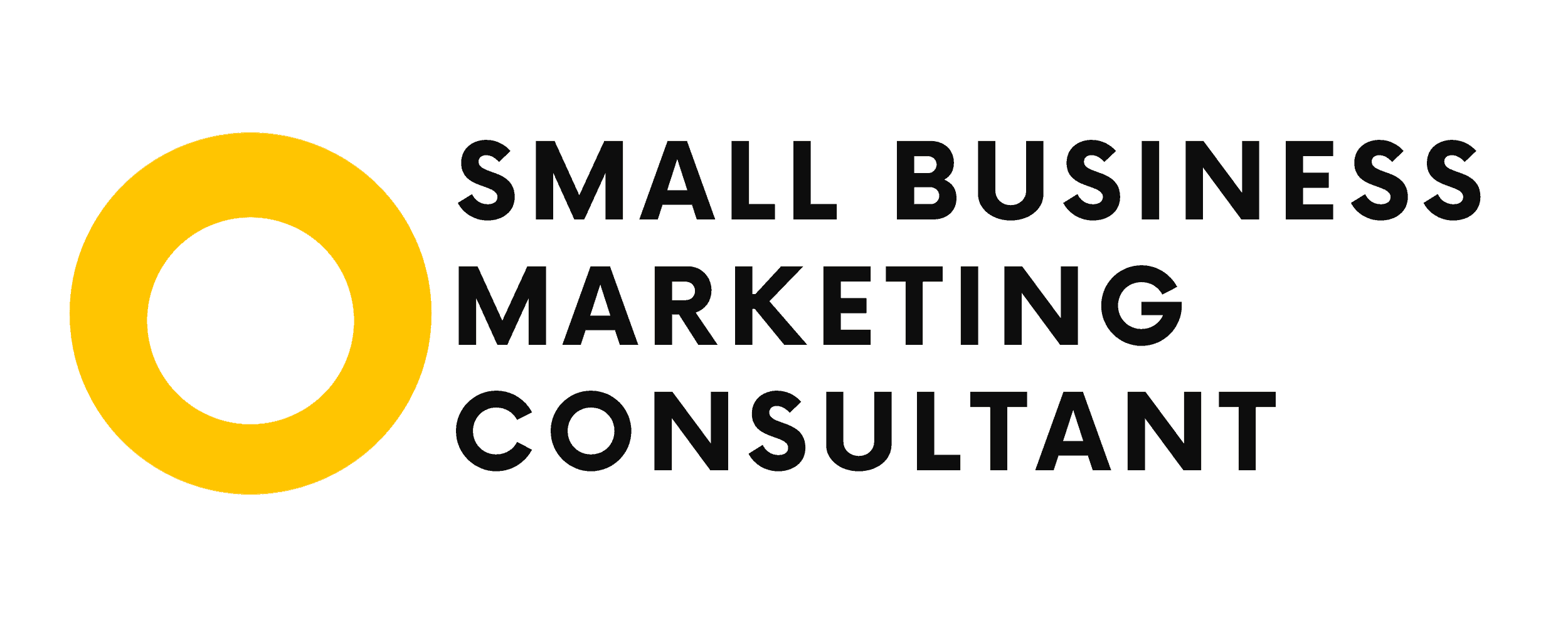
Having a marketing strategy means building your business on solid foundations. These key steps are designed to give small business owners and entrepreneurs some best practice tips with regards to creating and developing a business or brand. I firmly believe that effective marketing is born out of an effective marketing strategy.
In an article by The Telegraph in 2019 entitled “Start-ups across the UK are going bust” it was stated that “660,000 new companies are registered in the UK every year…60 per cent of those new businesses will go-under within three years, and 20 per cent will close their doors within just 12 months.” And these, very off-putting, statistics pre-date the catastrophic effects of Coronavirus and, most recently, of the cost of living crisis.
There are many reasons why businesses fail. Investopedia, in its article “The 4 Most Common Reasons a Small Business Fails”, lists “Financing Hurdles, Inadequate Management, Ineffective Business Planning and Marketing Mishaps” as the key problems. After reading this post on marketing strategy, I hope you’ll feel better informed and in a better position, at least, in regards to the last two reasons for failure.
Finally, this is intended as straightforward advice, explained in plain language, for professionals who haven’t studied marketing.
It does not cover campaign specifics with regards to digital marketing strategy, local marketing strategy and branding.
It’s about getting a few essential things right in your go-to-market strategy and / or understanding how to make tweaks along the way.

1) Why Marketing Strategy Is Important
In La-La Land, you dream up a product or service, have a website designed and ta-da, sales come flooding in.
In real life, unfortunately, the idea of “build it and they will come” is not often a reality (unless you’re famous and have built up an interested audience somewhere else).
Marketing Planning Process
When I was working for Nestle, one of the biggest companies in the world, we reviewed and refined marketing strategy every year for each and every brand.
This marketing planning process involved an incredibly thorough deep dive into all aspects of a brand’s performance. This meant digging into how each of the ranges, products and individual units were doing across a range of measures (including sales and profit).
Off the back of this research, a “brand plan” was written, with clear indications of how the brand and its ranges would be developed and grown over the coming year and beyond. This document had a clearly defined (longer term) vision or goal. This goal was supported by shorter term objectives, strategies, and actions, particularly for the upcoming year, with results that could be measured.
Marketing Strategy Examples
Dependent on the complexity and breadth of a business, you might have different objectives (or goals) for its various product ranges or services. These objectives could lead to very different marketing strategies, for example:
Example objective for one range of products:
– To drive trial of new products (e.g. a new meal product formulated for kittens).
This objective would require types of marketing strategy and tactics that inspire the target audience to try the product for the first time. The final execution could be something along the lines of money off coupons or in-store sampling.
OR
Example objective for another range of products (under the same brand umbrella):
– To drive loyalty of a popular range of products (e.g. cat treats).
The second objective is all about getting current customers to become more loyal to your brand and range. A marketing strategy example could be to encourage customers to buy the product more often. The tactic could be some kind of loyalty card, offering customers greater rewards the more they buy.
A common mistake, when thinking about marketing strategies for small business, is to go straight to what tactics you believe will make a difference. These tactics – social media, SEO, local advertising – are sometimes blindly carried out by business owners, with no specific goal in mind. What should really happen, is that you go back a few steps to fully understand what goals you have set out for your business and how marketing can support these goals. Then, once you have decided on some overall marketing objectives, you can choose what strategies you might want to employ and what tactics can support those strategies. By focusing on creating – however loosely – a small business marketing plan, there’s less of a risk of you mindlessly jumping straight to paid advertising or organic social media tactics, when actually you might get better results from staff incentives or small business seo. Think before you jump, make sure that there is careful thought behind your actions in order to choose the best marketing strategies for small business.
What Is The Cost Of Marketing?
Whichever marketing or sales (often promotional) mechanic you’re using to influence your target market, it will have a cost.
Whether you choose to invest in local business marketing, ppc advertising or video content as part of a social media marketing strategy…all of these costs need to be taken into account.
If you own a product business, you’ll see that as distribution points increase, so does the time spent fulfilling any bespoke packaging and packing requirements from retail partners. This might mean more labour time and possibly help (at a cost) from third party logistics companies.
Going back to my Nestle days, there were trade-marketing teams responsible for each of the supermarket giants, as well as for the independent retail sector.
Dependent on your marketing strategies, you might need some of these marketing services:

2) Category Definition & Concept Definition.
Words matter. Being specific matters. Try and keep things simple.
What market or category are you in? Have you labeled your product or service in a way that others will naturally understand?
I recently spoke to a small business owner who had paid several hundreds of pounds to a company in Brazil for his web design. He had jumped at the package of website design, plus social media and bonus services for about £750.
I won’t describe everything that was wrong with what was delivered, but simply focus on two key problems; the definition of his concept and the communication surrounding it.
Unfortunately the marketing agency he chose to work with didn’t understand the UK market and had poor language skills. This led to awkward terminology, namely “property rejuvenation”, instead of the widely recognised term “home and garden maintenance”.
The result was a poorly defined concept and weak copywriting, that included spelling mistakes. All of this can really put off a target audience, causing confusion and mistrust.
Web Design & Copywriting
Whether you need someone to help you with web design from scratch or already have a website up and running, I recommend you double check all your website text once it has been written. Then, get at least one other pair of trusted eyes to carefully read through it word for word.
It has been said that customers need to know, like and trust you before buying from you. I constantly see websites with spelling mistakes and it never inspires trust.

3) Customer Targeting
Know Your Target Audience.
Even if you believe that you are selling to “everyone”, there are always going to be people who are more likely to buy your product or service today. This is preferable to a blanket approach, where you’re targeting people who might never buy from you.
The terms target market and target audience are often used interchangeably. One way of differentiating between these terms; a target market is who you are targeting in broad terms. A target audience is a more specific sub section of this.
Once you’ve identified a broad target market, it’s a good idea to dig a little deeper and do some target market segmentation.
In a nutshell, you just need to deepen your understanding of the specifics relating to your target audience groups. How can these groups be broken down by age, gender, socioeconomic background etc.? Where are they located geographically? (hyper local? within the county? National?). What psychographic and behavioural attributes do they have? (broadly speaking, how do they live, what are their habits, what types of items or services do they normally buy, what things are important to them?).
Finding out what your target audience likes and dislikes, wants and needs is essential when developing your product or service. There are lots of ways of carrying out research. Searching for relevant groups on Facebook, following the right hashtags on Instagram or surfing the web for forums and blogs are a few ways to do this.
What is a Customer Avatar?
Dependent on what you’re selling, your target market and target audience might be quite broad. Narrowing it down to an ideal customer (or “ideal customer avatar” as they’re also called) can help in terms of really focusing your marketing activity and budget. Ultimately, it’s unlikely that you will have endless funds and you need to make every penny work.
All this means is creating a profile of precisely who your ideal customer is. It would be helpful, for instance, to understand whether your customer avatar is more likely to be a:
- 20-year old, female student with low disposable income, a passion for TikTok and addicted to buying the latest fashion trends.
- 45-year old man, working in finance, with lots of disposable income but only interested in well-known brands, cars, craft beer and certain radio stations.

Niche Marketing
You could decide to shy away from mass marketing and go down more of a “niche” road.
Offering a product or service, that appeals to a very specific (or niche) group of people might be easier and cheaper to market than something mass market.
The (dream) lure of huge volume sales might make mass market options more attractive, however success is also down to what share of market you can get within your competitive context.
With niche marketing it might be easier for you to stand out and make a name for yourself. This, in turn, could help you build the foundations of a strong brand, with the potential for further product launches.
Once the above details have been clarified, ask yourself… Are you:
- Giving your target market / audience something that they really want or need?
- Solving a problem that they have?
- Offering something better or different than what is already being offered by competitors?
OR – and here is where you need to be very honest with yourself – are you:
- Putting something out there that you like, that there already is a lot of and that lacks a point of difference or uniqueness?
- Getting wrapped up in the passion you have for your own product or service and ignoring the cold, hard facts about your competitive environment?
4) Why Brand Positioning Is Important.
Where does your product or service fit in its category and market?
How are you positioning your business? A budget fast fashion brand will look and feel quite different to a premium, sustainable fashion brand.
Is your product or service offering very specific (e.g. high-end, gluten free bread) OR more mass-market and mainstream (e.g. a neighbourhood bakery focused on low prices).
All of these decisions will influence the core of the product or service offering (the quality and sophistication of the ingredients, the packaging used, the price-point) as well as how you communicate and what audiences you target.
People will expect different things from your product or service dependent on whether you market it as a value or premium product. Different sets of people will also value what you’re offering in different ways and be ready to spend different amounts of money dependent on their demographic, geographical, psychographic and behavioural profiles.
Some businesses are quite sophisticated with their product positioning, managing various brands and product ranges across their portfolio. Tesco, for instance, owns its own label brands such as Tesco Value and Tesco Finest, as well as other brands and ranges such as Hearty Food Co, Creamfields and The Grower’s Harvest. All of these have different price-points and propositions that will appeal to different audiences.

5) Understand Your Market Competitors.
Competitive analysis is essential in marketing.
How competitive are you within your market? What exactly are your competitors offering and how does this compare with your product or service? What are your points of difference (also known as PODs)?
Once you know exactly what you’re offering, you’ll need to know who you’re up against!
Some things to look our for:
- What other brands and businesses are out there that do what you do?
- Are you aware of what they offer and at what price?
- Do you know their key features and benefits?
- How professional does their brand look? (logo, website, communication).
- What “market share” or “share of wallet” or “share of mind” do they own?
- Are they local, national or international?
- What are their strengths and weaknesses?
It’s only through knowing what you’re competing against that you’ll be able to create a differentiated, highly competitive proposition.
Although, more often than not, I end up doing the market research for clients myself, I encourage all of my clients to figure out who 3-5 of their closest competitors are. As a very basic rule of thumb, this means checking websites and typing company names into Google to see what comes up. You need to go through the checklist above and find out as much as you can about them. When I’m doing this for clients, I can carry out a digital marketing audit and dig a little deeper for a more extensive analysis. This entails exploring how much traffic a competitor website gets, what the online reviews say, how they perform from a search engine optimization (SEO) point of view etc.
Now, armed with an understanding of what the competitive landscape looks like, what will you establish as your points of difference (PODs)? What can you do better? It is good to remember that there are millions of successful companies in the world and space for most of us to carve out a business (people love to read about a small business success story). There are, however, also millions of businesses that fail every year (stories that are not shared and glorified in the media). Some of these could have potentially enjoyed greater success, had the business owner understood and taken account of the target market and competitive landscape.

6) What USP Stands For And Why You Should Care.
Your USP – known as your Unique Selling Point or Unique Selling Proposition – explains your unique point of difference vs. your competitors.
It is what sets you apart and should be something that your target customer truly values. Is your product or service delivered to the customer in a unique way? Do you offer a special ingredient? Actually…worded differently, what is your special ingredient?
If you’re selling a product, are you offering a free 24-hour customer service line to help customers with their queries? Are you selling your product in a uniquely convenient format that no one else is offering?
If you’re selling a service, what sets you apart from others? Do you have a unique way of doing things? A unique process?
This USP will be a key part of your communication and a reason for people to choose you over competing brands.
As a product based business, if you make the right decisions across product, price, place, promotion (the original 4 P’s of Marketing in marketing theory) AND offer a USP of real value, you’re heading in the right direction.
Tie this to winning communication and stories that truly engage with your target audience and you’re starting to look like a brand with potential, rather than just another product amongst many.

7) Market Development Strategy
Distribution Strategy
Distribution is a key consideration within your marketing strategy. Given that your distribution strategy will impact your pricing strategy, it is advisable to think about this pre-launch. How much you charge for your product or service can make or break you.
Are you planning to build a business solely based on direct distribution? (selling to the end user direct)
OR
Will you be selling both direct and to multiple trade (in-between) customers?
Distribution Channels
Which of these distribution channels are you considering?:
- Direct Distribution Channels e.g. Your own physical store, website or both?
- Multi Channel Distribution. Through third parties who own online businesses or retail store environments.
- Your country of origin only or internationally.
International Marketing Strategy
If you have international ambitions, do you know for sure that your product or service will appeal to people within the countries you have in mind?
Have you considered the:
- Competitive landscape within each specific country?
- (Obvious) costs involved such as exchange rates and delivery and returns.
- (Not so obvious) costs relating to customs or export, such as labeling and packaging.
- Trademarks. Protecting your brand name and identity within those markets? (this can be expensive from a legal point of view and not something you want to do immediately, although there are many brand thieves out there).
- Language barriers (e.g. if a customer in a foreign country writes to you with a complaint?)
Of course, there are also some great sources of advice and guidance out there. If you’re based in the UK, you could head to the website for the Department Of International Trade.

Marketing Pricing Strategy
Distribution channels cost money.
At its most basic, even if you’re selling straight to the end user, your website or landing page will have running costs that you need to include in your profit and loss calculations (e.g. domain name, website platform, hosting , apps).
If you’re selling a service life might be slightly easier, especially if you’re just managing yourself and your time at the beginning.
If you’re selling products, you’ll soon find out how expensive third party distribution channels can be, with many of them working on a wholesale, fees or commission basis. Whether you choose to sell wholesale, to distributors, online or through physical retail outlets, you’ll need to have a clear understanding of costs and margins. This means understanding the difference between cost price, wholesale price and RSP (recommended selling price) BEFORE finalising your pricing.
Places To Sell Items Online
Ebay is probably one of the cheapest distribution channels out there, but you might find that Amazon gets you better results for a full-price product (vs. second hand). Click here for the Amazon Revenue Generator calculator Amazon can be a powerful engine IF you have the right product and promotional strategies in place. You’ll need to be prepared for fees, dependent on the plan you take, that can include fulfilment, storage, relabelling etc.
Small craft businesses might dream of being listed on Not on the High Street or on Etsy.
Fashion brands might be aiming for European giant Zalando or independent brand champion Wolf & Badger
Bear in mind that each of these e-commerce platforms might have a selection process, command a heavy commission (e.g. 20-40%) and have stringent rules about what you need to promise in terms of international delivery times and returns.
The distribution channels you choose will also evoke what type of brand you are and what your brand position or brand values are. Selling luxury, sustainably made shoes on a mass-market discount website might not do much for your brand image, for example.
Timing Within Marketing Strategy
When my small, independent fashion brand, Cat Turner London, was accepted on Zalando I whooped for joy. Only to then come down to the harsh reality that it wasn’t quite going to work out.
The costs and expectations from Zalando didn’t match up with what I could feasibly and profitably deliver at that particular time. I needed to carry more stock (which is expensive), with better profit margins, to withstand the costs and delivery requirements.
In these instances, it’s preferable to remove the element of ego (“Oh my God, I’m going to be listed on a major e-commerce platform”) and realistically look at the commercial viability.
You can always reconsider certain options later, once you’ve got all your ducks in a row.
The element of both timing and time are important within marketing strategy. You need to spend time understanding the core elements of marketing strategy (such as these 7 key steps). However, it’s not just a one off job. You need to be close to some of these factors on an ongoing basis and carry out reviews periodically, ideally once a year.
If we’ve learned anything over the last few years, it’s that unexpected and dramatic changes in the economic climate can destroy businesses in an instant. I believe that business owners who spend time on marketing strategy and on truly understanding the core elements and value of their business are better protected. It means that, at any stage of the game, they are so comfortable with their inner and outer environments, that they can pivot, tweak and make the necessary adjustments for growth as well as survival.

